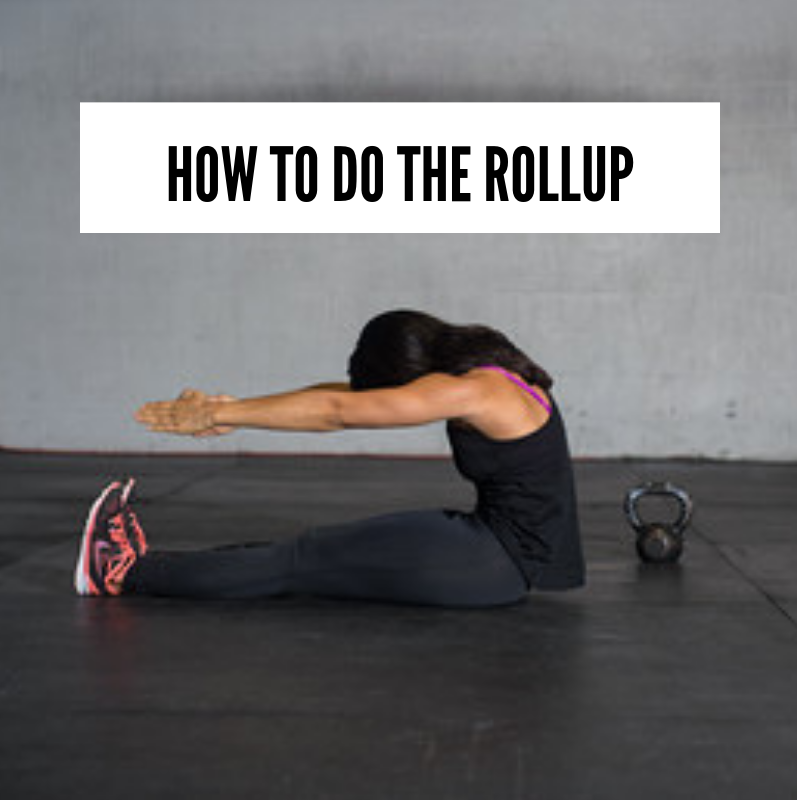To the untrained eye, the Rollup appears to be one giant sit-up requiring the kind of core strength one can only dream of. But the truth is, this famous Pilates exercise has less to do with your abdominals and a lot more to do with your back flexibility.
This is often the Roll-up can feel extremely difficult even to the strongest and most athletic individual, and it’s one I use across the board with Pilates clients, my 1:1 BarbellSTRONG members, and in my Pilates for Lifters course.

Why Do the Rollup At All?
The Rollup is one of those fundamental Pilates exercises that Joseph Pilates included very early in the mat order to mobilize and warm up the back as quickly as possible. Its genius placement right after the Hundred (which warms the whole body up fairly quickly) keeps the spine moving into forward flexion while strengthening and even stretching the abdominals.
Only problem is that most people butcher this exercise by doing everything possible to get up instead of focusing on the true purpose of the exercise: Mobilizing the spine into forward flexion.
Over the years, I’ve learned to troubleshoot this exercise for those that struggle on the “up” portion so that they can truly build up the flexibility needed to execute it properly. First, let’s look at what the Rollup looks like in all its glory.
Problem #1: Using momentum to come up
Solution: Rollup with the band
The band assists you in the toughest part of the exercise – the UP. Most people will blame their lack of ab strength here, but even the most ripped person will try to hurl themselves up if their spine is too compressed or stiff to curl up and forward. In these cases, anchor a light to medium resistance band to a rig and as you curl up and forward, raise the arms a few inches to help get you into your c-curl.
Problem #2: Legs lift up and griping the hip flexors
Solution: Prop between the ankles
Physics tells us that as one lever lifts up, the other opposing lever acts as the counterweight to assist the motion of the first. In this situation, the torso is the first lever, and it requires the legs to act as the counterweight in order to bring the upper body up. If the legs start to lift up halfway through the exercise, gravity yanks the torso down assuming it’s the legs that need assistance lifting up.
Quite messy, if you ask me. The solution here is simple: Throw in a yoga block, foam roller, or stack of towels between the ankles to help anchor the legs down. In the video below, I’m using a small foam roller between the ankles, which offers two advantages:
- It gives the legs something to squeeze so that I immediately engage the pelvic floor and lower abdominal muscles
- It helps anchor the thighs down so I can actually get stronger where I need it most without cheating the exercises
This is a nice way to get strong individuals to mobilize their back without resorting to compensation, and helps put their spine and ribcage in the proper place to execute the Rollup right.
Part of what I teach in my Pilates FloWOD course is how to move the spine in ways that allows you to get more out of your lifting endeavors. Walking around with a compressed spine day in and day out, is bound to leave you with back pain, cranky joints, or worse an injury down the line. Using Pilates techniques and exercises for just 10-15 minutes a day, you can start recovering better and addressing the mobility and strength details that most weight lifting and meathead exercises ignore.

